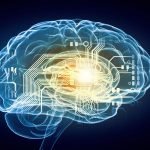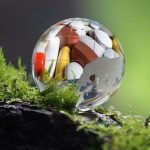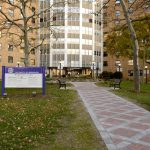The “U” Shaped Curve of Coffee: Most Recent Coffee Study
The most recent study on coffee has attempted to show the relationship between coffee and tea consumption and hypertension. Since caffeine, contained in both beverages is a stimulant, it is intuitive to assume there would be some effect. Caffeine is known to have dramatic effects on increasing blood pressure over the short term, but this study showed the potential effects of long-term use.1
Results after Multivariable Analysis
Information on 63,257 Chinese participants aged 45-74, who were tracked during a mean time period of 9.5 years, was utilized. Of these participants, and over the 9.5 years, 13,658 cases of hypertension were diagnosed. The results after multivariable analysis revealed an association between hypertension and coffee consumption, which followed an inverse U-shaped curve.
Best and Worst Association with Hypertension
Apparently drinking 1 cup of a coffee per day has the worst correlative association with developing hypertension. Drinking less than one cup per day was associated with a reduction in risk of developing hypertension, which is understandable. What is interesting is that drinking 2 or more cups per day of coffee is associated with decrease in risk (though not lower than not drinking coffee at all). The clinical application of the study may be that for a patient with mild hypertension, who drinks only 1 cup of coffee per day, they should either increase their intake, or stop altogether.
Caffeine Raises Blood Pressure
Caffeine does raise blood pressure – through sympathetic over-activation, adenosine receptor antagonism, increasing norepinephrine by directly stimulating the adrenal gland, as well as direct effects on the kidneys.2
Coffee is a Rich Source of Potassium
The proposed mechanism to account for this U-shaped curve has to do with all of the beneficial components in coffee, aside from the caffeine. But there may be elements in coffee which, when taken in larger doses, limit the effects of the caffeine (or compensate for them). One of these could be potassium. Coffee is a rich source of potassium; 5 cups supplies roughly a quarter of daily need.3 Potassium relaxes smooth muscle, as well as promotes vasodilation through nitric acid production.4 Another component which may help reduce blood pressure is chlorogenic acid.5
Sources
- Chei CL, Loh JK, Soh A, Yuan JM, Koh WP. Coffee, tea, caffeine, and risk of hypertension: The Singapore Chinese Health Study. Eur J Nutr. 2017 Mar 1. doi: 10.1007/s00394-017-1412-4. [Epub ahead of print]
- Nurminen ML, Niittynen L, Korpela R, Vapaatalo H. Coffee, caffeine and blood pressure: a critical review. Eur J Clin Nutr. 1999;53(11):831-839.
- Geleijnse JM. Habitual coffee consumption and blood pressure: an epidemiological perspective. Vasc Health Risk Manag. 2008;4(5):963-970.
- Haddy FJ, Vanhoutte PM, Feletou M. Role of potassium in regulating blood flow and blood pressure. Am J Physiol Regul Integr Comp Physiol. 2006;290(3):R546–R552.
- Watanabe T, Arai Y, Mitsui Y, et al. The blood pressure-lowering effect and safety of chlorogenic acid from green coffee bean extract in essential hypertension. Clin Exp Hypertens. 2006;28(5):439-449.
 Node Smith, associate editor for NDNR, is a fifth year naturopathic medical student at NUNM, where he has been instrumental in maintaining a firm connection to the philosophy and heritage of naturopathic medicine amongst the next generation of docs. He helped found the first multi-generational experiential retreat, which brings elders, alumni, and students together for a weekend campout where naturopathic medicine and medical philosophy are experienced in nature. Three years ago he helped found the non-profit, Association for Naturopathic ReVitalization (ANR), for which he serves as the board chairman. ANR has a mission to inspire health practitioners to embody the naturopathic principles through experiential education. Node also has a firm belief that the next era of naturopathic medicine will see a resurgence of in-patient facilities which use fasting, earthing, hydrotherapy and homeopathy to bring people back from chronic diseases of modern living; he is involved in numerous conversations and projects to bring about this vision.
Node Smith, associate editor for NDNR, is a fifth year naturopathic medical student at NUNM, where he has been instrumental in maintaining a firm connection to the philosophy and heritage of naturopathic medicine amongst the next generation of docs. He helped found the first multi-generational experiential retreat, which brings elders, alumni, and students together for a weekend campout where naturopathic medicine and medical philosophy are experienced in nature. Three years ago he helped found the non-profit, Association for Naturopathic ReVitalization (ANR), for which he serves as the board chairman. ANR has a mission to inspire health practitioners to embody the naturopathic principles through experiential education. Node also has a firm belief that the next era of naturopathic medicine will see a resurgence of in-patient facilities which use fasting, earthing, hydrotherapy and homeopathy to bring people back from chronic diseases of modern living; he is involved in numerous conversations and projects to bring about this vision.










